Istanbul Seaport by Squint Opera
James Shaw published a making-of the Istanbul Seaport project by Squint Opera on his blog back in January, and it was a great read especially with the breakdown videos attached to it. I rarely dealt with such scale and never in motion, so I was fascinated by the result and intrigued about the process behind the scenes that took place to get this done. How does one (a team actually) get started with this manage it and so on. I asked James Shaw & Nicholas Taylor about it, and they kindly offered their valuable insight.
About Squint Opera and the Film
Squint/Opera offers full design and digital production services across moving and still image, interactive design and editorial content for all marketing collateral. They have built their reputation on their ability to communicate complex and compelling narratives and construct believable spaces, with a strong sense of atmosphere and occasion. Squint Opera have studios in London, Istanbul, Melbourne, Abu Dhabi and Sao Paulo.
The Istanbul Seaport film was Directed by Nick Taylor of Squint Opera and shows a local fisherman encountering an ocean liner en route to the new seaport development which grows out of the water before his eyes, before he samples what this new island has to offer.
The team at Squint Opera include
- Lead 3D: James Shaw
- 3D Team: Steven Fayers, Dan Fells, Bruce Garnham, Nic Hamilton, Jack Hunter
- Lead Compositing & Grading: Rory Lowe
- Motion Graphics: Jack Hunter, James Merry
Behind the scenes
Before you dive in, do read the blog post that started it all on Jamess blog. This article / interview is more of a follow-up on the things you will read there
Istanbul Seaport The Making Of / James Shaw Blog
Now that you are up to speed
Go ahead!
Ronen : The first thing I would be interesting to know about is how do you even get started on a project like the Istanbul Seaport?
James : In the initial contact with the client we discuss what they want out of the project and possible ideas and information they want to see. From this we start to draft up a storyboard, trying to encompass their ideas and come up with a storyline that might complement those ideas. These idea sessions often take place downstairs in the Doodle bar over several cups of coffee, and are usually quite a fun way of collaboratively coming up with storylines.
Storylines within our animations are an important part of Squint Opera’s work and give an all important character and flow within the films. It’s also a good time to set pace, look at timings overall, lighting, graphic element integration, whether it all fits within budget, and generally plan the thing out. It is this stage that sets up the rest of the film process. This static storyboard is then taken to the clients and discussed to see whether everything fits well and that they are happy with it.
At this stage this is only really sketching and after this point we start to think about possible locations for these shots to be taken. In the case of Seaport we wanted to shoot in location to get a real, local feel. Nick talked with the client about possible locations and a number were set.
Often things like Google street view or Google Earth can be used to get a rough idea of what these places might look like and offer for a shoot. Because we were on a limited budget we decided to do the shoot over some places in Istanbul within a 30 hour period, so it was a high stress, exhausting time for all. It always helps to have different people concentrate on different aspects during these times, so Director to concentrate on the story overall, Director of Photography (DOP) to get the lighting and technicalities of the filming correct, and VFX supervisor to take measurements of everything to translate into the CG environments and HDR images to light them.
Nick : A film is always a collaboration between us and the client. They are paying money with a certain end in mind and we want to make good movies and have fun doing them. With some clients the two are mutually exclusive but others are more up for it.
In the initial pitch for the film I presented a montage of a cruise ship flying over the main shopping street in Istanbul. This went down well which set a good precedent for the rest of the film. The clients needs in such a project are about showcasing the things on offer to potential investors and partners, namely floor space for hotels, malls and offices, apartments, etc. Generally quite boring and standard fodder but has to be well represented and there was literally a list of spaces that needed to be shown.
The nicer thing was that it had to be clearly set in Istanbul, which is a very beautiful and lively place. We got around the problem of having a central character walking around the essentially mundane place in a state of awe by having the place come out of the sea in front of his eyes so that to him it is incredible and he is not sure that it is real, and at this point he just goes on a fantasy shopping spree ticking off the clients check list of spaces. Once we had all the shots more ore less agreed it was about hunting for ways to do them and locations to do them in.
We decided early on that our film was to be a series of locked shots (no camera movement) to make the thing easier/cheaper, no cranes or dolly tracks and much easier in post. The flying ship shots were easier to plan and didn’t change much from the earliest storyboards. The growing scenes were predominantly all 3D. There was the shopping trip for which we did most of it entirely in camera but the tricky shots were the ones where we had to get the character and his boat into shots that were clearly located in their development. We tried to cut the number of these shots as much as possible but these are the shots that the clients really wanted 😉
Here the initial storyboard we made…
[slideshare id=12860951&doc=752aecomseaportv001-120509033201-phpapp02]Ronen : How do you plan and setup for a real location to take footage in for later CG comp like the Boulevard Tram? what are the key points to consider before you choose and go on location?
James : With shots like the boulevard shot it does take a stretch of the imagination to compose what the shot might become. We usually discuss it out beforehand with director, lead 3D and lead compositor to see if there might be any problems. We plan with sketches and might block out the scene in 3D to experiment with lenses and composition. We also research into a number of precedent images to give visual clues as to the direction of the shot and to convey it to the team. At this point we will have a good idea of what to film and what will be present in the background. For example in the shot with the ocean liner approaching the boat, we framed the shot to allow plenty of room at the top of the frame to fit in the CG ocean liner later on.
Although we have a rough idea of what will be real and what will be CG, often the split lines between them are left till we get it all into NukeX. After CG cameras are matched to the real footage using either tracking in NukeX, or the VFX supervisor’s detailed notes on lenses and site measurements, we will begin blocking in the CG of the shot. This is roughly modelled at first, rendered and composited into the footage within NukeX.
At this stage we begin to discuss where the best place is to blend CG and real elements, and it is unique for each shot. There are always issues that arise regardless of how well you plan the shot as well. For instance the boulevard shot just didn’t show enough of the development in the way it was framed. So to fix this we had to keep the camera the same height and direction, but extended the frame to the left to allow us more room to introduce more CG elements.
Nick : We did all kinds of planning for the shots as James mentions above. I had been on two previous trips to Istanbul to hunt for possible locations. Many of them were dictated by access and permissions for which the client was responsible for all but the public spaces. For those we got a government permit.
All the planning went to pot when the clients failed to come up with the goods. On the day before we were scheduled to start shooting, with the crew all in hotels and on day rates, we didn’t have a hotel to shoot in and we didn’t have a marina or any certainty about what boats we were to get. In fact, we didn’t even know whether we were supposed to get on a plane and fly all the way down to Oludeniz in the south that very evening to do the filming there instead. We had to arrange potential boats and actors in both places for either eventuality. In the end we ended up staying in Istanbul and organizing the shoot late on the evening before filming.
We started with the hotel early in the morning. The really nice one that we had story boarded for, and done all the 3D tests for, was cancelled and we ended up in this really naff post modern place without having had a chance to scout it. So it was: get there, look for spaces, try and rope the various staff in the place into helping out and trying to get the shots done before a national football team turned up and we had to be out.
You’ll notice that the lobby shot is all but the desk of the original place and everything else is quite tight except for the room which we couldn’t get around. (you can check out the location here) Not exactly the modern designer place that they were initially calling “the worlds first 8 star hotel”.
Because we had a good idea about what we needed for the shots we were able to improvise it. That was a 14 hour day. In bed by 12. The following morning we were up at 3am to meet the boats for the Bosphorus shoot, which went on till sunrise then the shots from the castle wall. followed by 3 hours rest and then to a private apartment where we shot some scenes we ended up cutting followed by shooting the night shots around Istanbul till sunrise for the mosque sunrise shot.
All in all, a total of 48 hours of filming with a 3 hour rest. We then had a normal sleep and then off again for the marina shoot which was again a case of getting there and working out how we were going to work it with 3D and post while we were there.
We had a number of shots to do and had scheduled to start at around 10am but the clients didn’t manage to get clearance with the Marina owners as they had said they would!!! So we just had to sit there watching the sun arc over until about 3pm and we just decided to start filming regardless. Luckily no one stopped us and we got the last shot with the guy leaving the marina in the setting sun with just minutes to go.
The last day was in the shopping street where we did the tram shot and the balcony scenes. Even though this was one of the locations we had found before it was still chaotic but mainly because it was a public boulevard and we were blocking it with a big green screen and it was windy. All we really needed was nice paving and this was the only place we could find. We couldn’t get permission around any malls and most of the city is quite messy or old and wobbly. This was a high end shopping street with patches of nice paving. We got hassled by the police a fair bit and had to move along a couple of times.
I would like to say it was all smooth planning and not a total chaos in execution as we somehow managed to nail it. Mainly down to having gone through everything a lot in advance, knowing what we were looking for and Murat, our amazing production manager. Who with two phones to his ears at all times somehow managed to pull things together at the last moment with no sleep. Getting the boats to arrive, equipment, actors and extras, dealing with shop owners, etc.
incredible!
You can see how we hoped it would be before we left England in the pre shot plan PDF below…
[slideshare id=12860978&doc=752aecomseaportv011-120509033519-phpapp01]Ronen : What were you using for the architecture buildup animation (broken apart to ordering)? How do you key frame this? and make sure it looks ok in render? I loved the lobby light drop down very much!
James : A lot of the animations were done manually. We have tried a number of particle and physics systems, which are fine up to a point, but become progressively harder to customize or move in specific directions.
We have some free scripts that move, rotate and scale geometry numerically in whatever direction you give coordinates for that we used, and key transfer tools that allow you to get one fragment perfect and copy that motion offset for the others. If you set keys at the end as a fully constructed form, then go to the beginning of the time slider and key the random positions in space then adjust the curves you can get this result.
The lobby light animation was all done manually with various dummies and controllers to get the timing exact for the shot.
All these where rendered out as viewport animation previews so we could quickly critique the animation before rendering with VRay. Using the shutter speed on a VRay camera at 1/50 second with motion blur enabled gave us all the motion blur in 3D as we found NukeX’s post motion blur gets confused with this much movement.
We usually render out animated objects as a completely different single frame render pass and composite this on top of a baked GI render of all the static objects in the scene. This saves us a huge amount of render time.
We have developed scripts that do this automatically to save us time in sending renders.
How do you tackle 3d people in this work?
For foreground characters we always prefer to use real people, as CG characters are just not believable. Mid and background characters we use a collection of various 3D people meshes with mocap data loaded onto them.
We have developed an automated process for loading mocap data onto a biped character and outputting this to a point cached mesh so we can drag and drop people into scenes easily.
Cheers,
James & Nick.





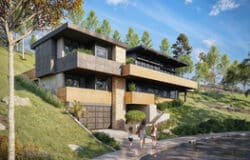
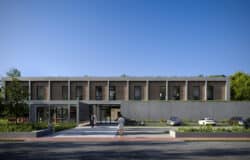





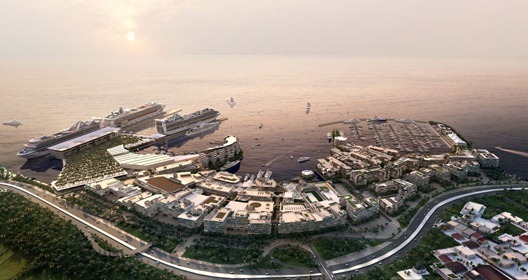
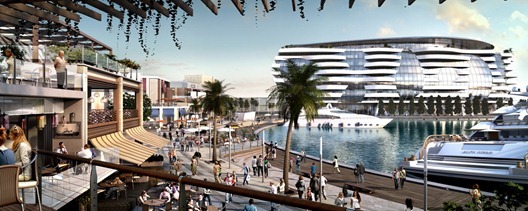








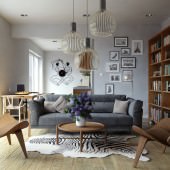
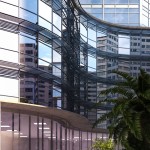
I still have lots of questions regarding this project, but I’ll set the stage for all of you to ask some too 😉 So go ahead…
Great work!
i like it alot. but is it a real project or just an own project
Excellent work! It´s great to see archviz films with larger and larger productions. Congrats to Squint Opera for expanding the borders of this field!
I was really interested in the pre-production, planning of the shots and in the details of the production itself. This article along with the making of on James Shaw´s blog have answered most of my questions. Great work on the article, Ronen!
Real client and real project – Not sure what is the current status of it though…
GREAT!
wwooww my city:)
and onderfull procect.Will it be built?
how 3 G artist draw wonderful,like that?:(I want to draw like that but i dont know how.
Amazing to see it turns out like this. Still keep the very initial 2d concept of this project. Awesome work!
Insane, one word. Great work there.
Great work,had a chance to see them at 3ds London,let’s not forget the micro creative hub which is battersea (Vyonyx are neighbours,shout out and props to that awesome team)
I’ve been a fan since i saw CHIPS video made for will alsop 🙂
excellent work as always.would like to know how many man hours went in to making this video?
keep up the good work 😉
What catches the Attention of this whole Project is the way they have carried out the process of Finishing up the project and the end product to the Client is Just so superb 🙂
Though would really love to have an Workflow Some Wires of the Whole Project @ronenbekerman 🙂
@anwar522 I’ll see if jimyshaw can send some wires in 😉
@ronenbekerman jimyshaw yes would love to see them 🙂
the wires are not that exciting tbh.
also the ‘shopping reverse animation’ was done with a series of controlled rayfire explosions of 3d shops filled up with random objects, negative gravity and a curve on the timescale to get the timing whip. ended up easier than manual animation.